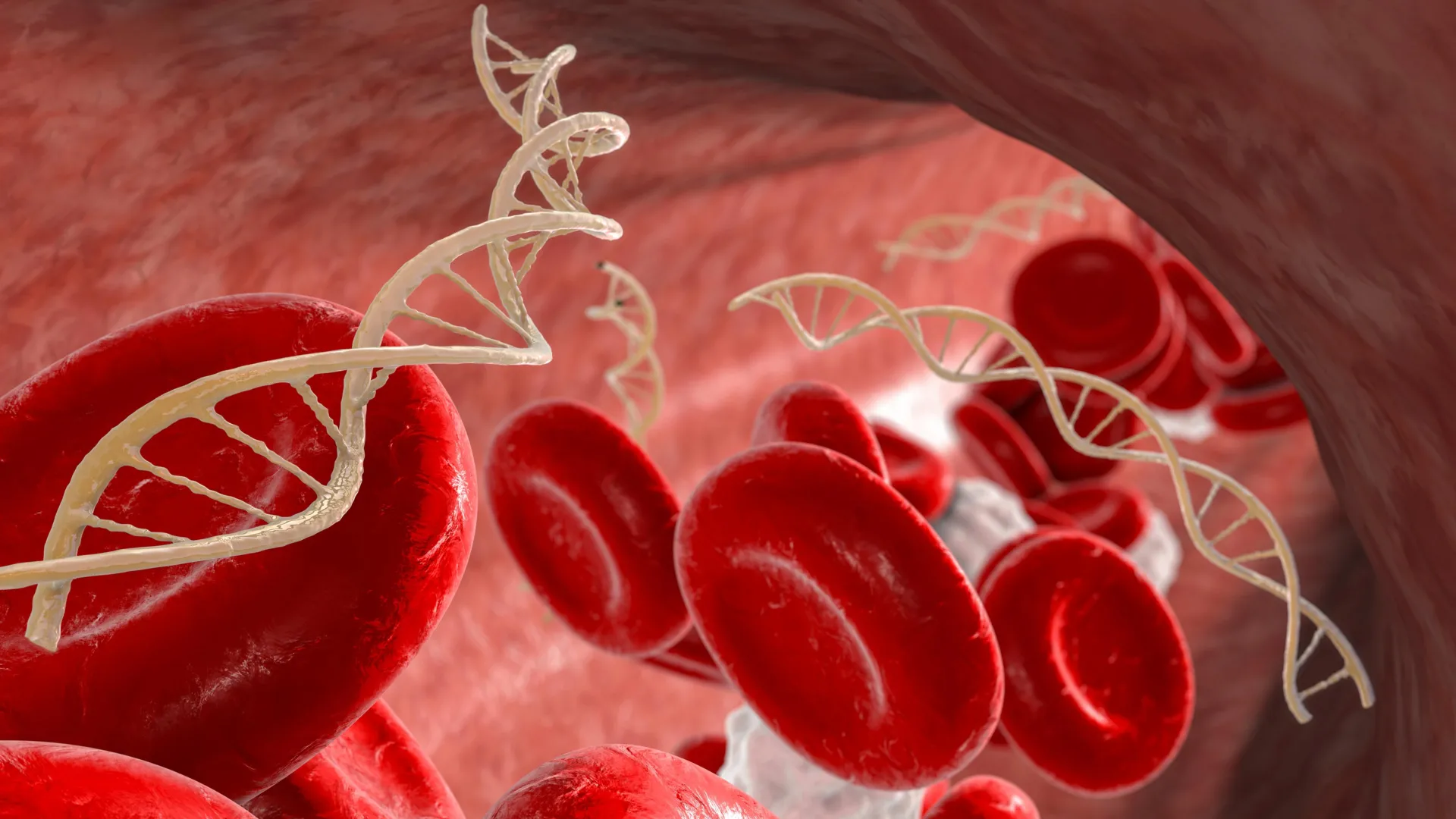Scientists turn “junk DNA” into a powerful weapon against cancer
- Date:
- October 27, 2025
- Source:
- King’s College London
- Summary:
- King’s College London researchers discovered that parts of our DNA once thought to be “junk” can actually help destroy cancer cells. In some blood cancers, damaged genes trigger chaos in these DNA segments, leaving cancer cells vulnerable. When scientists used existing drugs to block the cells’ repair systems, the cells collapsed. This finding could open the door to new treatments for hard-to-treat cancers.
- Share:

Researchers at King's College London have discovered a promising new approach to treating certain blood cancers by using existing drugs in an unexpected way. Their work shows that a long-overlooked part of human DNA, once dismissed as "junk," can actually be used as a therapeutic target.
Damaged Genes and Uncontrolled Cell Growth
The study, published in Blood, focused on two blood cancers: myelodysplastic syndrome (MDS) and chronic lymphocytic leukemia (CLL). These diseases often involve mutations in two key genes, ASXL1 and EZH2. Normally, these genes help regulate which other genes are active or inactive, maintaining proper cell function. When ASXL1 and EZH2 are damaged, this control breaks down, leading to unchecked cell production and cancer development.
Traditional cancer therapies work by blocking harmful proteins that faulty genes produce. However, when a mutation stops a gene from making any protein at all, there is nothing for the drugs to target. This leaves patients with limited treatment options and a poorer prognosis.
The Surprising Role of "Junk DNA"
Nearly half of our DNA consists of repetitive sequences known as transposable elements (TEs). These mobile pieces of DNA were once considered useless. The King's researchers found that when ASXL1 and EZH2 are mutated, TEs become abnormally active. This heightened activity puts the cancer cells under stress and causes DNA damage -- creating a weakness that can be exploited with the right drugs.
Drugs called PARP inhibitors, already used to treat other types of cancer, are designed to prevent cells from repairing damaged DNA. In this study, the researchers discovered that these drugs work in a different way when TEs are active. As TEs move within the genome, they create DNA breaks. Normally, PARP proteins help repair this damage. When PARP inhibitors block that repair process, the DNA damage accumulates until the cancer cells die.
To verify that this effect truly depended on TE activity, the researchers used reverse transcriptase inhibitors, which stop TEs from copying themselves. When these inhibitors were added, the PARP drugs lost their cancer-killing effect. This proved that the treatment worked through a unique TE-based mechanism rather than the usual BRCA-related pathway seen in other cancers.
Turning "Junk DNA" Into a Powerful Ally
"This discovery offers new hope for patients with hard-to-treat cancers, by using existing drugs in a completely new way, turning what was once thought to be useless DNA into a powerful target for treatment," said Professor Chi Wai Eric So of King's College London.
Although the study centered on blood cancers such as MDS and CLL, the researchers believe the same principle could apply to other cancers with similar gene mutations. If confirmed, this strategy could extend the use of PARP inhibitors to a wider range of cancers, opening new paths for treatment and giving patients more options for therapy.
Story Source:
Materials provided by King’s College London. Note: Content may be edited for style and length.
Journal Reference:
- Bernd B. Zeisig, Chiou-Tsun Tsai, Clemence Virely, Tsz Kan Fung, Ali Tuğrul Akin, Estelle Troadec, Bo Jiao, I. Richard Thompson, Priscilla Nga Ieng Lau, Nanjun Li, Andriani Charalambous, Larissa Bomfim, Jennifer Lynch, Athina Georgiou, Robbert Hoogeboom, Claire Lynn, Si-Yi Zhang, Piers E. M. Patten, Cynthia L. Fisher, Anna Schuh, Seishi Ogawa, Ghulam Mufti, Mohammad M. Karimi, Chi Wai Eric So. Transposable elements as novel therapeutic targets for PARPi-induced synthetic lethality in PcG-mutated blood cancer. Blood, 2025; 146 (11): 1314 DOI: 10.1182/blood.2025028560
Cite This Page: